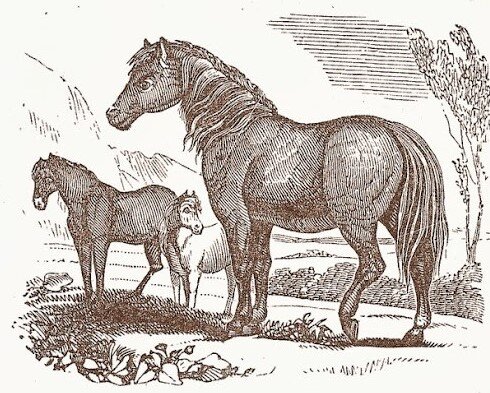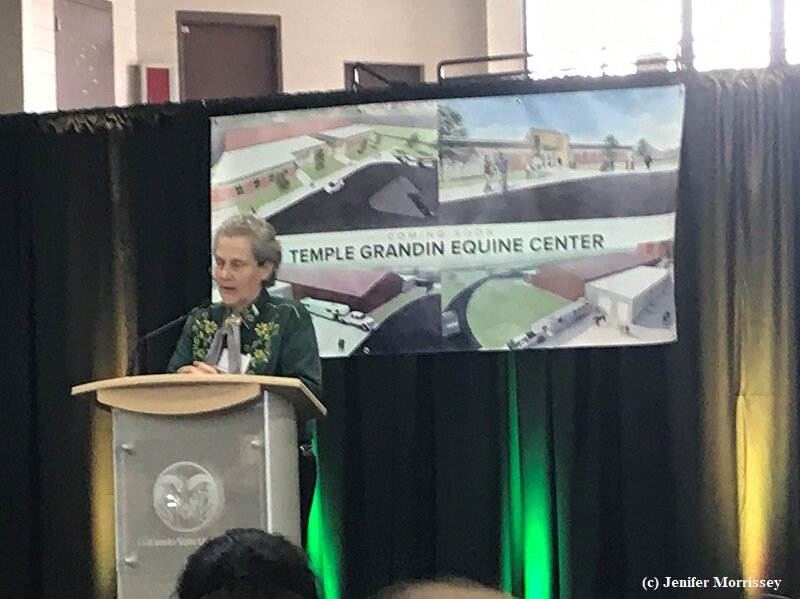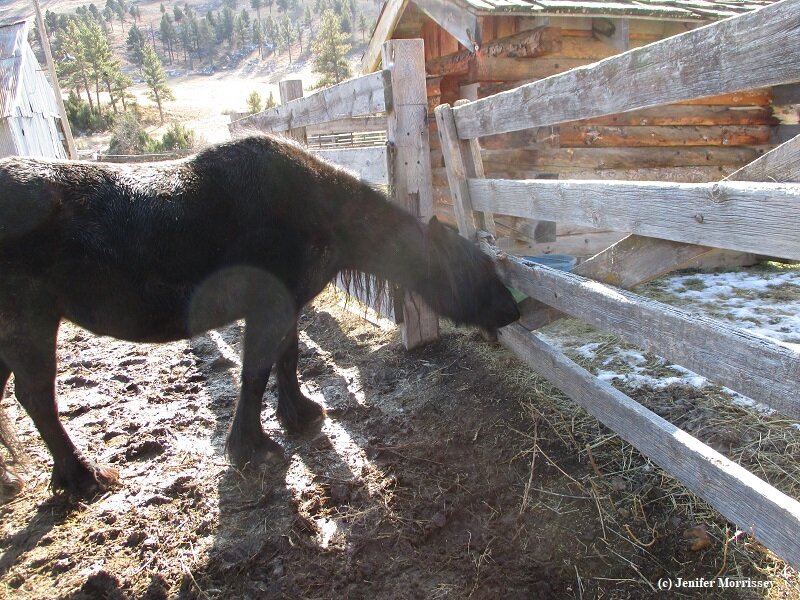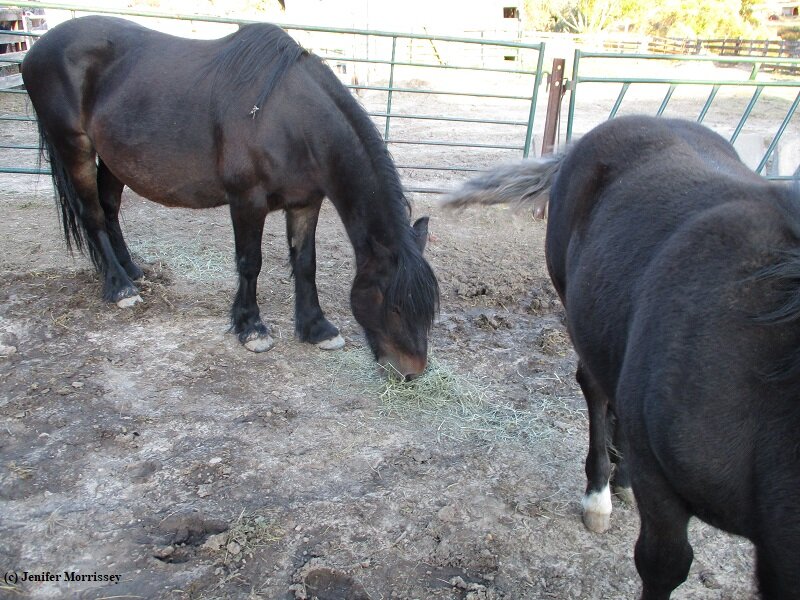“There’s lots of laminitis in the Black Hills.” My stomach dropped when I was told this, shortly after moving myself and my pony herd to the Black Hills of South Dakota. My ponies of course are considered easy-keepers, so I always worry about them developing any of the diseases of over-indulgence. And my first spring here has certainly made me feel how incredibly fertile this environment is compared to the high elevation landscape where we all lived in Colorado.
In Colorado, I had pony metabolic management well in hand. By that I mean that I managed them in a way that respected their natural cycle of fattening in the summer and slimming in the winter. Coming into spring each year, I had the herd in the moderate range of the Henneke Body Condition Score, where “ribs cannot be visually distinguished but can be easily felt.” (1) Through twenty years of pony ownership, I never had to deal with laminitis or the other health problems of over indulgence.
This spring I am recognizing some errors in management that I made during the winter. In Colorado I sometimes had to increase the amount of hay I fed to keep my ponies’ weight from dropping too far when the weather got tough. This past winter in South Dakota, the ponies were full time on dormant pasture. When the weather got particularly cold and/or snowy, I supplemented with occasional tubs of hay. I was basing this on the condition of the lead mare, which was a mistake because she was not representative of the rest of the herd, who were all heavier. So this spring, they’ve all come into warmer weather and green grass with a little more ‘cover’ than I like to see.
My late husband and I, on our numerous trips to England, would come home and look at my ponies with a critical eye. Often I would feel like my ponies had less substance than the ones we’d seen, but after one trip, Don pointed out that many of the ponies we were seeing had much more flesh than mine do except late in the year. More recently I’ve had my hands on ponies bred by other people, and I was surprised how much flesh they had on them for the time of year. I was reminded of a study that found that many owners don’t know how to assess healthy body condition in their equines. (2) Equally likely is that equine owners don’t understand or manage to the natural cycle of fattening in the summer and slimming in the winter, with that second part - slimming in the winter - being the challenging part.
A recent visitor said, “Your ponies don’t seem obese.” No, that’s true. On the Body Condition Score, obese is considered to be when it is hard to feel the ribs, and I can still feel their ribs. Nonetheless, I’m keeping the mares in for half days, following the lead of a like-minded equestrian here in the Black Hills. I will feel more comfortable with their current weight when the grasses start to die back in the late summer. And you can be sure that next winter, I’ll be careful with that extra hay!
Camargo, Fernanda, et. al. “Body Condition Scoring Horses: Step-by-Step,” thehorse.com, article #164978, 1/15/19.
Morrison, Philippa, et al. “Perceptions of obesity in a UK leisure-based population of horse owners,” 9/25/15, as found at https://www.ncbi.nlm.nih.gov/pmc/articles/PMC4595036/
© Jenifer Morrissey, 2020
You can find more stories about what’s possible, practical, and powerful with small equines in my book The Partnered Pony, available internationally by clicking here or on the book cover.





































